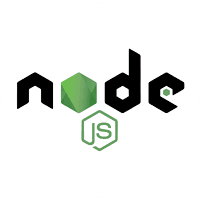Unleashing the Power of Node.js: A Comprehensive Guide
In the ever-evolving landscape of web development, Node.js has emerged as a revolutionary technology that has transformed the way applications are built and executed. This article aims to delve into the world of Node.js, exploring its fundamental concepts, advantages, use cases, and how it has reshaped the web development landscape.
1. Introduction to Node.js
Node.js, built on the Chrome V8 JavaScript runtime, is an open-source, cross-platform runtime environment that enables developers to execute JavaScript code outside the browser. Unlike traditional server-side languages, Node.js leverages an event-driven, non-blocking I/O model that makes it exceptionally fast and efficient, especially for real-time applications.
2. Node.js: Behind the Scenes
Under the hood, Node.js employs an event loop, allowing it to handle numerous connections simultaneously without creating additional threads. This single-threaded architecture, combined with asynchronous programming, enables Node.js to handle high levels of concurrency and provide impressive scalability.
3. Setting Up Node.js Environment
Getting started with Node.js is straightforward. Simply download and install the Node.js runtime from the official website. Once installed, you can verify the installation using simple terminal commands.
4. The Event-Driven Architecture
Node.js thrives on an event-driven paradigm. Events are emitted, and callbacks are executed when these events occur. This architecture is ideal for handling multiple connections efficiently, making Node.js particularly suitable for building chat applications, gaming servers, and more.
5. Asynchronous Programming with Callbacks
Callbacks are the foundation of asynchronous programming in Node.js. They allow developers to write non-blocking code by executing functions when an operation completes, without waiting for it to finish. However, managing callbacks can lead to callback hell and decreased code readability.
6. Promises and Async/Await
To mitigate callback-related issues, Node.js introduced Promises and later the Async/Await syntax. Promises provide a more structured approach to handle asynchronous operations, while Async/Await simplifies code by allowing developers to write asynchronous code that resembles synchronous code.
7. Creating a Basic Node.js Application
Let’s dive into practical implementation. We’ll create a basic “Hello World” application using Node.js. This hands-on example will help you grasp the fundamental structure of a Node.js application.
8. Node Package Manager (NPM) Demystified
NPM, bundled with Node.js, is a powerful package manager that facilitates installing, sharing, and managing dependencies for Node.js projects. It boasts an extensive repository of open-source packages, empowering developers to streamline development workflows.
9. Building Web Servers with Node.js
Node.js shines in creating efficient web servers. We’ll explore how to build a simple HTTP server using Node.js, handling incoming requests and delivering responses. This knowledge forms the basis for more complex web applications.
10. Express.js: A Framework for Node.js
Express.js, a minimalist web framework for Node.js, simplifies the process of building robust web applications. We’ll uncover its features, routing mechanisms, middleware usage, and how it accelerates development.
11. Real-time Applications with WebSockets
Node.js’s event-driven architecture makes it a prime candidate for real-time applications. We’ll delve into WebSockets, a protocol that enables bidirectional communication between clients and servers, and see how Node.js revolutionizes real-time experiences.
12. Data Storage and Retrieval using Node.js
Discover the myriad of options for data storage and retrieval within Node.js applications. From traditional relational databases to NoSQL solutions like MongoDB, we’ll explore how Node.js interfaces with these technologies.
13. Scalability and Performance Optimization
Node.js’s inherent scalability is a boon for handling a large number of concurrent connections. We’ll explore techniques for optimizing performance, leveraging tools like clustering and load balancing.
14. Security Best Practices in Node.js
Security is paramount in any application. Learn how to identify and mitigate common security vulnerabilities in Node.js applications, including input validation, authentication, and managing sensitive data.
15. Deploying Node.js Applications
In the final leg of our journey, we’ll cover the deployment of Node.js applications. We’ll discuss various hosting options, deployment strategies, and tools that simplify the process of taking your application from development to production.
Conclusion
Node.js has undoubtedly transformed the realm of web development, enabling developers to create lightning-fast, scalable, and real-time applications. Its event-driven architecture, asynchronous nature, and extensive ecosystem have cemented its position as a powerhouse technology in the industry.
FAQs
Q1: Is Node.js suitable for building large-scale applications?<br> A: Absolutely! Node.js’s scalability and non-blocking I/O make it a great choice for handling large-scale applications.
Q2: Can I use Node.js for frontend development?<br> A: Node.js is primarily used for backend development, but tools like Webpack and Babel allow it to be used in frontend workflows as well.
Q3: What are the advantages of using Express.js?<br> A: Express.js simplifies the creation of web applications with its minimalist approach, routing capabilities, and middleware support.
Q4: How does Node.js handle database operations?<br> A: Node.js interfaces with databases using various libraries and drivers, providing options for both relational and NoSQL databases.
Q5: Where can I learn more about Node.js security?<br> A: There are several online resources and guides that offer insights into best practices for securing Node.js applications.

